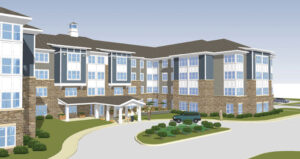In the realm of commercial real estate investment, necessity-based properties stand out for their robust performance across economic cycles. These assets, which encompass properties that deliver essential goods and services, offer a unique combination of recession resistance and inflation-hedging characteristics. Among these, seniors housing is particularly noteworthy, providing compelling benefits for investors seeking stability and growth in their portfolios.
Recession Resistance in Seniors Housing
One of the most persuasive arguments for owning necessity-based commercial real estate is its resilience during economic downturns. Seniors housing, which includes independent living, assisted living, and memory care facilities, epitomizes this resilience. The demand for seniors housing is driven by demographic trends rather than economic conditions. As the population ages, the need for these facilities continues to grow, creating a steady demand regardless of the broader economic climate.
During recessions, businesses that provide essential services, such as healthcare and senior care, tend to weather economic storms better than non-essential sectors. Seniors housing, a critical component of the healthcare continuum, often experiences stable occupancy rates even when other real estate sectors see declines. This stability can insulate investors from the volatility typically associated with economic downturns.
Inflation-Hedging Characteristics
Inflation poses a significant concern for investors, eroding the purchasing power of returns over time. Necessity-based commercial real estate, particularly seniors housing, offers a strong hedge against inflation. This advantage is largely due to the nature of lease agreements within this sector.
Asset managers in seniors housing often incorporate scheduled rent increases or escalators into lease contracts. These escalators ensure that rents rise automatically over time, keeping pace with or exceeding inflation. As a result, property revenues increase, which can lead to higher distributions for investors. This built-in inflation protection is a critical feature that enhances the long-term value of necessity-based real estate investments.
Strong Tenants and Reliable Returns
Another key factor contributing to the appeal of seniors housing is the quality of tenants. Facilities within this sector are typically operated by established healthcare providers and senior care companies. These tenants have a vested interest in maintaining their operations, given the essential services they provide. Their stability and reliability translate to consistent rental income for property owners.
Moreover, the strategic importance of seniors housing means that operators are often well-capitalized and capable of meeting their lease obligations, even in challenging economic times. This reliability further bolsters the recession-resistant nature of the investment and provides a predictable income stream for investors.
Conclusion
Investing in necessity-based commercial real estate, particularly seniors housing, offers a compelling case for both recession resistance and inflation hedging. The essential nature of the services provided by seniors housing ensures steady demand, while the structured lease agreements protect against inflation. These characteristics make seniors housing a valuable component of a diversified investment portfolio, offering stability and growth through all phases of the economic cycle.
As demographic trends continue to favor the growth of the senior population, the demand for quality seniors housing is set to increase, reinforcing the sector’s resilience and attractiveness to investors. In an unpredictable economic environment, necessity-based commercial real estate, exemplified by seniors housing, stands out as a prudent and profitable investment choice.






